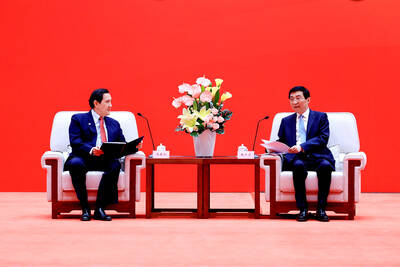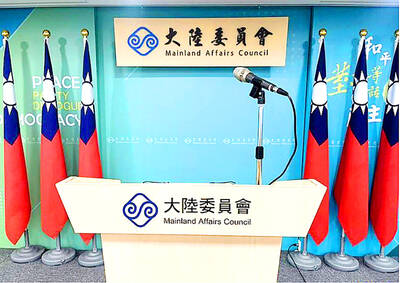Nokia Corp's new N-Gage QD is a vast improvement over its first all-in-one cellphone/gaming device. But that's not really saying much.
The Finnish company's first foray into mobile video games was reviled as ugly, heavy, awkward to use and underpowered when it was released last year.
The QD revision remains stuck between two disparate functions: talking and gaming. Like the original, I found the QD too big and uncomfortable to be a full-time phone yet too limited to compete with more robust, dedicated portable game systems.
There are three major improvements: The price has dropped to an attractive US$99 when bundled with a wireless contract (US$199 without), the way game and memory chips are swapped out has been simplified, and it's a bit easier to use for talking.
With the original N-Gage, you had to shut down and pry off the battery to change games stored on tiny multimedia cards. On the QD, I quickly peeled back a small back plastic tab to reveal the card slot. Better yet, the slot is "hot-swappable," so you can change game and memory cards without having to turn the QD off.
Nokia also removed some features: FM radio, MP3 music player, Universal Serial Bus interface and tri-band world phone support.
The QD retains the original's Bluetooth short range wireless and 4,096-color backlit screen (the QD screen is actually a bit brighter).
The first N-Gage has been described as taco-shaped, and it still applies to the QD. Though a bit smaller at 11.8cm long by 6.8cm wide, it's still too big to cram in a shirt pocket.
And at 191.75g ,the QD weighs a bit more than the original's 135.33g. The added heft translates into longer battery life. Nokia claims 10 hours of game time, five days of talk time or 11 days of standby time with the QD.
The so-called "side talkin'" feature of the original, where you had to hold the side of the phone against your head to talk, has been replaced with a less ridiculous design. You simply hold the QD against your head like a cellphone.
Some odd design decisions remain. The tiny loudspeaker is on the back of the silver and black device. Even with the volume turned all the way up, it was hard to hear games without headphones.
Since the QD lacks USB, you'll need a computer with Bluetooth capability if you want to back up or exchange files like address books or calendars.
My test unit shipped with three games: "Tiger Woods PGA Tour 2004" and "The Sims: Bustin' Out" from Electronic Arts, and "Ashen," a first-person shooter from Torus Games.
About 20 games are available, and Nokia says it plans to have about 50 games out by Christmas. I'm not sure it's enough to compete against game-only devices like Nintendo's Game Boy Advance, which has a massive library of games.
The three QD games I tried were a mixed bag. I found "Ashen," an N-Gage exclusive, to be a blocky-looking throwback to three-dimensional monster killing games like "Quake" and "Doom." I was more impressed with "The Sims" game. The graphics were about on par with the Game Boy Advance version I've played, though the puny speaker made it hard to hear.
"Tiger Woods" had crisp visuals, though it was hard to control the swing using the four-way directional pad and the number buttons. Whether I was blasting a golf ball toward the green or a supernatural monster into oblivion, the 176 by 208 pixel screen -- about half the size of a business card -- felt cramped and limiting.
Along with voice and games, the QD runs the Nokia Series 60 operating system to offer data functions like e-mail and Web surfing. It includes free access to "N-Gage Arena," an online community where people can play against each other online, chat and post on message boards and receive game tips and community news. Additionally, many video games use Bluetooth for quick, local multiplayer battles.
Since the original was a tri-band phone, it worked worldwide. The QD is dual band, so there are two different models depending on where you live. It's already available in Asia and Europe. The US version is expected July 27.
Nokia says the QD was designed to complement the original, which it continues to sell.
Give Nokia credit for at least trying to reduce the number of gadgets strapped to our belts. Perhaps the third time will be a charm. For now, though, the QD doesn't perform any function well enough to reduce all that waistline clutter.

BUILDUP: US General Dan Caine said Chinese military maneuvers are not routine exercises, but instead are ‘rehearsals for a forced unification’ with Taiwan China poses an increasingly aggressive threat to the US and deterring Beijing is the Pentagon’s top regional priority amid its rapid military buildup and invasion drills near Taiwan, US Secretary of Defense Pete Hegseth said on Tuesday. “Our pacing threat is communist China,” Hegseth told the US House of Representatives Appropriations Subcommittee on Defense during an oversight hearing with US General Dan Caine, chairman of the Joint Chiefs of Staff. “Beijing is preparing for war in the Indo-Pacific as part of its broader strategy to dominate that region and then the world,” Hegseth said, adding that if it succeeds, it could derail

CHIP WAR: The new restrictions are expected to cut off China’s access to Taiwan’s technologies, materials and equipment essential to building AI semiconductors Taiwan has blacklisted Huawei Technologies Co (華為) and Semiconductor Manufacturing International Corp (SMIC, 中芯), dealing another major blow to the two companies spearheading China’s efforts to develop cutting-edge artificial intelligence (AI) chip technologies. The Ministry of Economic Affairs’ International Trade Administration has included Huawei, SMIC and several of their subsidiaries in an update of its so-called strategic high-tech commodities entity list, the latest version on its Web site showed on Saturday. It did not publicly announce the change. Other entities on the list include organizations such as the Taliban and al-Qaeda, as well as companies in China, Iran and elsewhere. Local companies need

CRITICISM: It is generally accepted that the Straits Forum is a CCP ‘united front’ platform, and anyone attending should maintain Taiwan’s dignity, the council said The Mainland Affairs Council (MAC) yesterday said it deeply regrets that former president Ma Ying-jeou (馬英九) echoed the Chinese Communist Party’s (CCP) “one China” principle and “united front” tactics by telling the Straits Forum that Taiwanese yearn for both sides of the Taiwan Strait to move toward “peace” and “integration.” The 17th annual Straits Forum yesterday opened in Xiamen, China, and while the Chinese Nationalist Party’s (KMT) local government heads were absent for the first time in 17 years, Ma attended the forum as “former KMT chairperson” and met with Chinese People’s Political Consultative Conference Chairman Wang Huning (王滬寧). Wang

CROSS-STRAIT: The MAC said it barred the Chinese officials from attending an event, because they failed to provide guarantees that Taiwan would be treated with respect The Mainland Affairs Council (MAC) on Friday night defended its decision to bar Chinese officials and tourism representatives from attending a tourism event in Taipei next month, citing the unsafe conditions for Taiwanese in China. The Taipei International Summer Travel Expo, organized by the Taiwan Tourism Exchange Association, is to run from July 18 to 21. China’s Taiwan Affairs Office spokeswoman Zhu Fenglian (朱鳳蓮) on Friday said that representatives from China’s travel industry were excluded from the expo. The Democratic Progressive Party government is obstructing cross-strait tourism exchange in a vain attempt to ignore the mainstream support for peaceful development